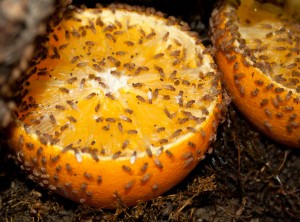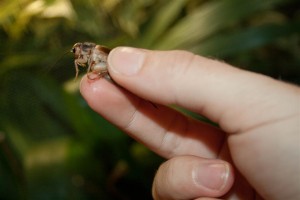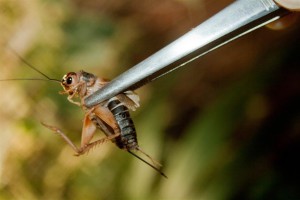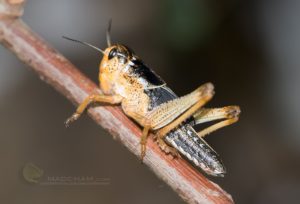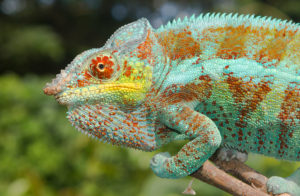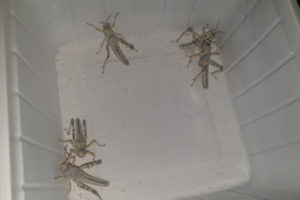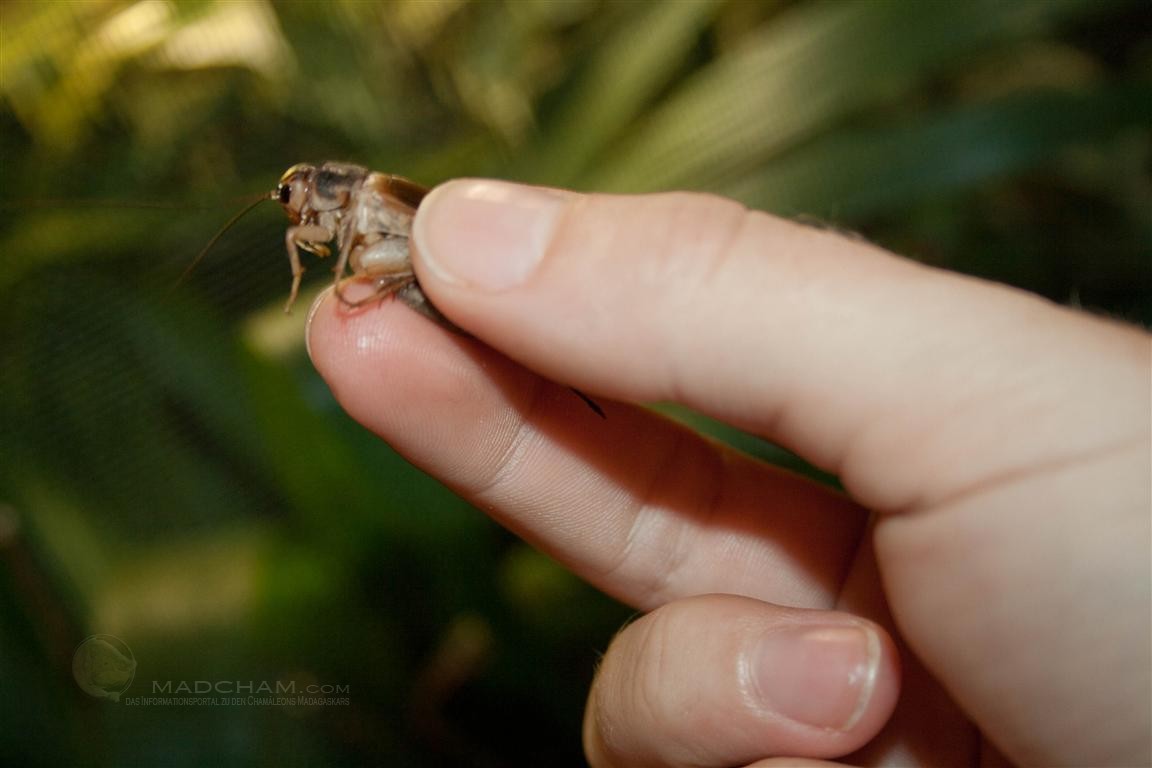
Keeping chameleons means not only keeping living insects, but also feeding them. There are several possibilities that we would like to present here.
Free inside the cage
The simplest and most practical method of feeding healthy chameleons is simply to release the food animals into the terrarium. The chameleon has to hunt himself and is therefore at least temporarily busy. This way you can feed crickets, flies and locusts very well. Fruit flies for small chameleons or young animals can easily be kept in the terrarium (and be slightly enhanced) by placing a piece of fruit, for example a half of an orange or kiwi, on the ground.
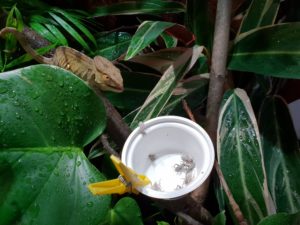
Young Calumma parsonii eating from a yoghurt cup
Yoghurt cup
For young animals, sick animals or beginners in terraristics, it is advisable to use a cup to feed the chameleon. This makes it much easier to check how much has actually been eaten. In addition, it is possible to offer food animals that would otherwise quickly disappear into the ground, such as firebrats, beetles or soldier fly larvae. The cup should not be transparent if possible, because the chameleon can’t deal with transparent “walls” and shoots against it by mistake. You don’t hang the cup at the top, but in the lower third into the terrarium so that the chameleon can see the insects from above. Once the cup is empty, it should be thoroughly cleaned and dried.
By hand
For insect feeding from the hand, especially those feeders are suitable which one would not like to have disappearing in the terrarium, for example many cockroach species or house crickets. To do this, however, the chameleon has to be a little accustomed to the owner, otherwise many animals do not take food offered by hand. Therefore you have to be patient. Most characters, however, quickly learn where to feed.
Feeding with tweezers
Tweezers are often offered in pet shops to allow keepers to handle unloved insects without having to touch them themselves. However, tweezers are not a really good idea for chameleons. Chameleons have a very sensible tongue. If they accidentally hit the tweezers, they can easily hurt this sensible part of their body. Only with chameleons, which must be fed by hand after tongue amputation or the like, tweezers can sometimes be helpful.

